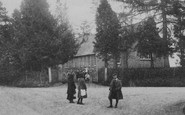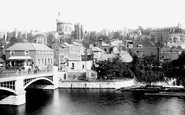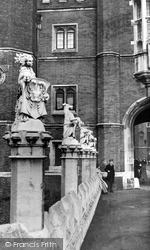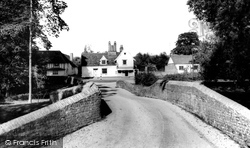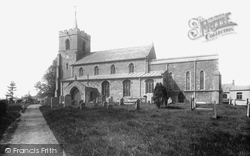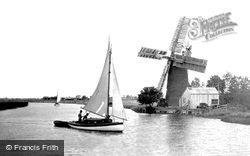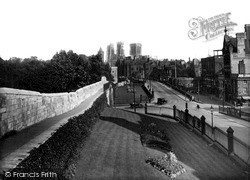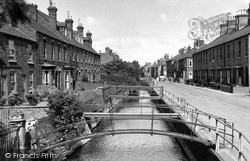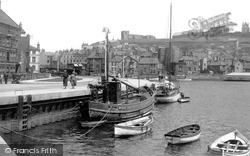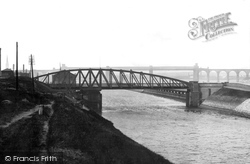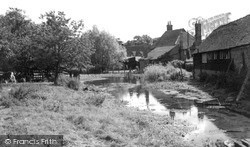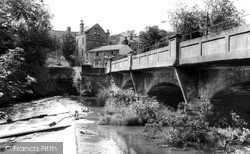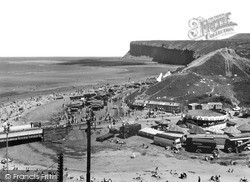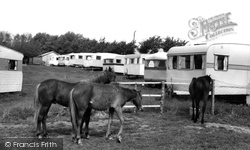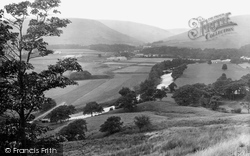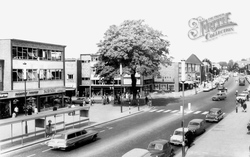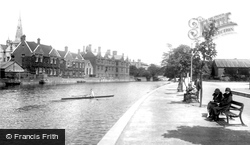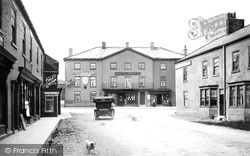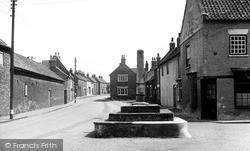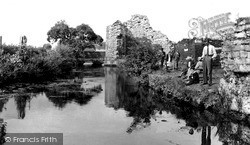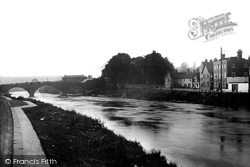Places
17 places found.
Those places high-lighted have photos. All locations may have maps, books and memories.
- Bridge End, Oxfordshire
- Bridge End, Lincolnshire
- Bridge End, Essex
- Bridge End, Bedfordshire
- Bridge End, Clwyd
- Bridge End, Warwickshire
- Bridge End, Surrey
- Bridge End, Durham (near Frosterley)
- Bridge End, Northumberland (near Hexham)
- Bridge End, Hereford & Worcester (near Tirley)
- Bridge End, Hereford & Worcester (near Bosbury)
- Bridge End, Shetland Islands
- Bridge End, Cumbria (near Carlisle)
- Bridge End, Northumberland (near Hexham)
- Bridge End, Devon (near Kingsbridge)
- Bridge End, Devon (near Sidmouth)
- West End, Yorkshire (near Pateley Bridge)
Photos
38 photos found. Showing results 1,261 to 38.
Maps
520 maps found.
Books
Sorry, no books were found that related to your search.
Memories
1,928 memories found. Showing results 631 to 640.
Worth School
I went to Worth School for my final yeat at junior school and took my "11+" there; for some reason a number of us moved to Worth from Three Bridges Junior school. I am not sure of the year but think it must have been 1953/4. I do remember the football pitch had quite an uphill slope!
A memory of Worth by
Garron Hill
Hello, my gran, Margaret Kerr lived on Garronhill for years. She sadly passed away in 1982. We holidayed there and she lived in the downstairs maisonette and we were only allowed as far as the bridge on the river Ayr to play. When ...Read more
A memory of Muirkirk by
The N.H.S. Early Years To Retirement
The Transport Department at Southmead Hospital when I joined them consisted of an officer, foreman, and four porter drivers, with two buses, three vans, and two cars. We were responsible for ...Read more
A memory of Bristol in 1960 by
Sutton/Carshalton In The 50's
We lived in a block of flats, Weihurst Court, Carshalton Rd. This was at the top of Ringstead Road, where the trolley buses came up this steep hill. As a child it was fun to watch when the arms of the trolley came off ...Read more
A memory of Sutton in 1943 by
Paper Kids
Hello John, I was one of your dad's paper boys. I can't remember what year as I also delivered for Billy Evans, Stuart and Linda's dad. Just down the road in our village, if you remember not only that, but I delivered for Chaplins ...Read more
A memory of Walsall Wood by
Windsor/Eton Town Bridge & Sir Christopher Wren's House
I remember when the old Roadmaster double-deckers used this bridge daily on their run to and from Slough. Now the bridge is closed to road traffic and the vehicles have to detour around the Brocas to access Windsor.
A memory of Windsor in 1900 by
Forties And Fifties
Born on Pottersway in '36, but raised on Carr Hill Rd. I went to Carr Hill School, then Grammar School...great and happy memories of the area. The freeze of '47; friends then were Jim Thompson, Jimmy Ward, Roy Fletcher, John ...Read more
A memory of Gateshead in 1940 by
Bradley St
I was born in 1953 and went to Bradley St Primary. I recall there were three girls who dressed the same; the Pearl triplets. I remember going on a school trip to Heathrow Airport and losing my souvenir cast metal model plane on the ...Read more
A memory of Uttoxeter by
Tea Leaf Alley Gertrude Street
Yes, I'm almost certain people will remember Gertrude Street. My name is John Howard and I lived at No.31 Gertrude St. Went to Mount Carmel RC, I also went to the Cad on Regent Rd many times. I'm always bumping into ...Read more
A memory of Salford in 1948 by
Growing Up In The Pit Houses
We were raised in a pit house on Springfield (sometimes 'Avenue') near the far end of Ings Lane, in the fifties. It was a small street, only 6 houses. 2 or 3 keys would open both front and back doors (and ...Read more
A memory of Bolton Upon Dearne by
Captions
1,755 captions found. Showing results 1,513 to 1,536.
The Ministry of Works had the moat dug out again in 1909-10, and discovered Henry VIII's bridge.
Although there has been a mill on the site since 1542, the present building dates to the 19th century, and was operational until 1937.
The River Brett is spanned by two adjoining 18th-century hump-backed bridges, one of which is dated 1754.
Very little remains of the palace except for two large fish ponds and the medieval bridge across the moat.
Duplicating an earlier shot from 1897, this view is looking westwards up East Street from the River Asker and East Bridge.
At Acle, on the river Bure, wherries and sailing craft glide by under the old bridge, their masts lowered.
It is nearly 20 years later, and the area to the right is now completely built up.
This view looks east along West Banks, with its numerous small bridges, to the mainly late Victorian artisan cottages (some are dated 1901).
The Angel Hotel, an old coaching inn, can be seen on the left, and Collier's hardware store stands beside the bridge.
The Old Quay Swing Bridge opens by pivoting on the pier on the left hand side of the canal.
Our second tour starts three miles west of Amersham in the delightful village of Little Missenden which grew up along the south bank of the River Misbourne and separated from Amersham by the parkland
The River Don flows under Station Lane bridge on the Duke of Norfolk's land. Cottages in the village date from 1845; just to the right was the old Forge Mill.
A fun fair can be seen in the foreground, and the beach entertains many visitors in this view of old Saltburn, with the Ship Inn just visible over the shoulder of Cat Nab (right).
This was among the 'horror pictures' used by the land agent John Cripwell in order to encourage Lord Antrim and the council of the National Trust to buy two thousand of acres from Lyme Regis to
Our photographer is standing on the bridge over the lock which separates the dock from the Lancaster Canal basin.
This fine seven-arch Grecian-style bridge over the River Don was built in 1850; it linked the village to Warmsworth, and replaced the ferry service.
Hidden among the trees in the centre of our photograph is a foot (and animal) bridge just a few miles outside Dunsop Bridge.The hill on the left is called Knot or Sugar Loaf.
Well known chain stores were strongly represented in Marlowes and Bridge Street - Truform Shoes, Dorothy Perkins, Milletts and Burton the tailors were here - as well as local shops and retail outlets such
We have now moved upstream west of the bridge, with a view taken from St Mary's Embankment in St Mary's Gardens.
Boroughbridge dates back to Norman times, when a bridge was constructed over the River Ure. In 1322 the Earl of Lancaster sought refuge in the local church following his defeat by Edward II.
A bridge over the River Hull made this village an important crossroads in medieval times - pleasure boats still tie up here.
An unusual view of the Abbey Gateway—in the centre—and the bridge over the Cornmill Stream, a tributary of the River Lea, with people relaxing around the broken walls.
This view is taken from the railway bridge on Brunel's Great Western Railway line from Paddington to Bristol, opened in 1841.
On the far side of the Severn, a boathouse and rowing boats indicate a swing to tourist trade.
Places (17)
Photos (38)
Memories (1928)
Books (0)
Maps (520)

